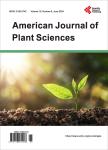Characterization of a Collection of Brassica carinata Genotypes for in vitro Culture Response and Mode of Shoot Regeneration
Characterization of a Collection of Brassica carinata Genotypes for in vitro Culture Response and Mode of Shoot Regeneration作者机构:不详
出 版 物:《American Journal of Plant Sciences》 (美国植物学期刊(英文))
年 卷 期:2011年第2卷第1期
页 面:27-34页
学科分类:1002[医学-临床医学] 100214[医学-肿瘤学] 10[医学]
主 题:Mustard Tissue Culture Genotype Cotyledons Swelling Callus
摘 要:Brassica carinata, a natural alloploid formed between B. oleracea and B. nigra, is a potential oil crop for the Mediterranean area in which genetic transformation could help to breeding. In vitro culture and shoot regeneration are key factors in developing an efficient transformation method in the genus Brassica. However, the studies for in vitro culture and shoot regeneration in B. carinata are limited to only a few genotypes. The aim of this study was to evaluate the in vitro culture response and shoot regeneration in a collection of B. carinata accessions to identify promising genotypes with high shoot regeneration for genetic transformation experiments. Cotyledonary explants from 51 genotypes were cultured in vitro and callus formation and swelling as well as the mode of shoot regeneration evaluated. A highly positive response to in vitro culture, i.e. callus formation or swelling, was observed in all the genotypes tested. Tissue blackening occurred only in eleven genotypes. Parameters like callus formation and swelling, and number of shoots per explant were highly variable among genotypes. Fourteen genotypes regenerated only via callus formation, whereas only one regenerated only via swelling. Most genotypes showed a higher percentage of callus formation than swelling. The average number of shoots regenerating per explant among genotypes was the most variable factor measured. Six genotypes regenerated more than 6 shoots per explant via callus phase. These genotypes have been identified as having a high regeneration potential and can be used in genetic transformation via Agrobacterium.



